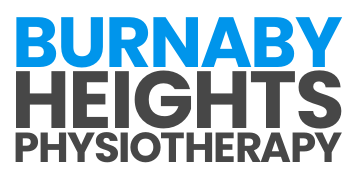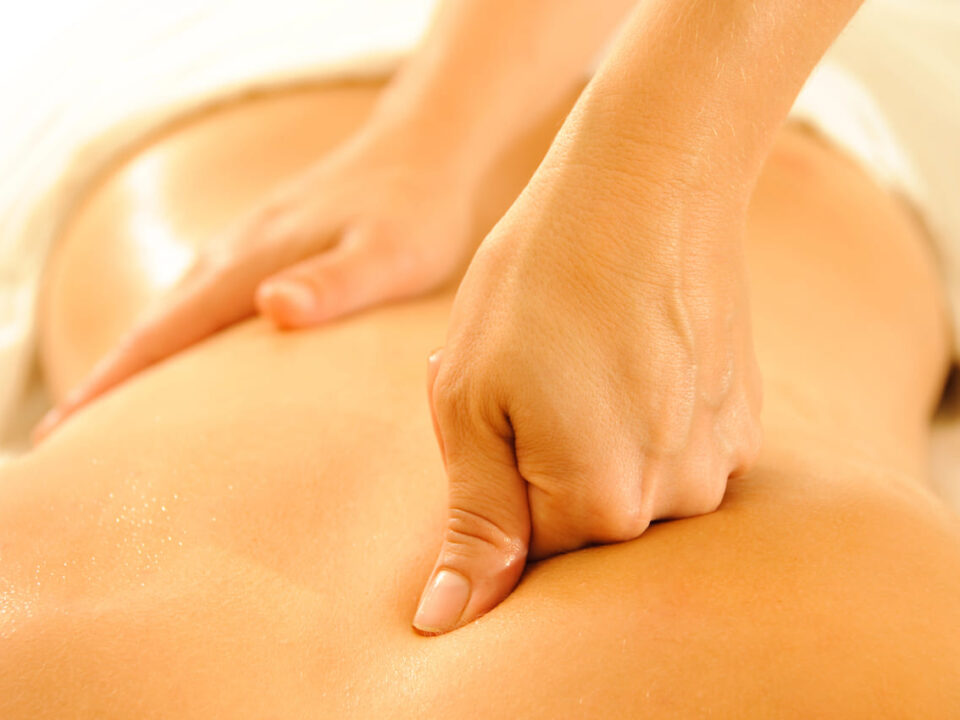
Targeting Pain at the Source: How Acupuncture Supports Joint Health
March 31, 2025
Natural Pain Relief and Well-Being: Exploring the Benefits of Acupuncture
April 29, 2025Physiotherapy is a broad and adaptable healthcare discipline designed to address a wide range of physical challenges—from pain relief to functional recovery and long-term health maintenance. Far from being a single, uniform treatment, physiotherapy includes several specialized approaches, each tailored to meet the needs of different populations and conditions. In this blog, we’ll explore the main types of physiotherapy, including musculoskeletal, pediatric, geriatric, and more. You’ll learn what makes each approach unique, what conditions they treat, and how these therapies work together to support comprehensive recovery and movement health across all stages of life.
Types of Physiotherapy Explained
Physiotherapy is not a one-size-fits-all practice. Depending on the condition, age group, or underlying cause of dysfunction, different approaches and techniques are applied. The main types of physiotherapy include:
- Musculoskeletal (Orthopedic) Physiotherapy: This is the most common type, addressing injuries and conditions that affect muscles, joints, bones, and connective tissues. It’s often used after sprains, fractures, or surgery.
- Neurological Physiotherapy: Focuses on conditions affecting the nervous system, such as stroke, Parkinson’s disease, spinal cord injuries, or multiple sclerosis.
- Cardiorespiratory (Pulmonary) Physiotherapy: Aims to improve breathing and cardiovascular endurance, especially in people with chronic respiratory conditions or heart disease.
- Pediatric Physiotherapy: Tailored to children and adolescents, this type of therapy helps with motor development, posture, and movement disorders.
- Geriatric Physiotherapy: Addresses the unique mobility, balance, and musculoskeletal needs of older adults.
Each type plays a crucial role in improving functional outcomes and is adapted to the individual’s goals, limitations, and overall health status.
How Musculoskeletal Physiotherapy Differs from Other Types
Musculoskeletal physiotherapy, also called orthopedic physiotherapy, focuses on treating issues related to muscles, bones, joints, tendons, and ligaments. It’s especially useful for people recovering from injuries, surgeries, or those dealing with chronic conditions like arthritis or postural pain. What distinguishes this type of physiotherapy is its hands-on, movement-based approach. Treatment often involves manual therapy to mobilize joints and release tight tissues, combined with personalized exercise programs that aim to restore strength, flexibility, and coordination.
People also receive education on movement retraining, helping them correct dysfunctional habits and prevent future injuries. This approach is commonly used for back and neck pain, sports injuries, tendonitis, and post-surgical rehabilitation. Because it targets the physical structure of the body, musculoskeletal physiotherapy plays a foundational role in improving mobility and function in a wide range of conditions.
The Role of Geriatric Physiotherapy in Supporting Aging Adults
As people age, they often face a natural decline in strength, balance, and mobility, making everyday tasks more difficult. Geriatric physiotherapy addresses these age-related challenges through targeted, supportive care:
- Fall Prevention Strategies: Geriatric physiotherapists focus on improving balance and coordination, helping older adults reduce their risk of falls and maintain independence.
- Mobility and Flexibility Training: Exercises tailored to individual needs help preserve joint mobility and reduce stiffness associated with aging.
- Pain Management for Chronic Conditions: Conditions like arthritis or osteoporosis are common in seniors; physiotherapy helps manage symptoms and maintain function without over-reliance on medication.
- Post-Surgical Rehabilitation: Older adults recovering from joint replacements or surgeries benefit from guided rehabilitation to safely rebuild strength and mobility.
- Maintenance of Daily Function: Physiotherapy supports the ability to perform everyday activities, helping seniors stay active and engaged in their communities.
Sports Physiotherapy Explained
Sports physiotherapy focuses on preventing, assessing, and treating injuries related to physical activity. It benefits both professional athletes and everyday individuals with active lifestyles:
- Injury Recovery and Prevention: Sports physiotherapists design rehab programs to safely return athletes to their sport while reducing the risk of future injuries.
- Performance Optimization: By identifying movement inefficiencies or muscular imbalances, physiotherapists help enhance athletic performance.
- Conditioning and Strengthening Programs: Tailored exercises improve endurance, strength, and flexibility based on the demands of a specific sport.
- Return-to-Play Guidance: Physiotherapists help athletes gradually resume activity with proper technique and conditioning to avoid re-injury.
- Rehabilitation for Overuse Injuries: Sports involving repetitive motion—like running, swimming, or tennis—can lead to strains and tendonitis, which are managed effectively through targeted treatment plans.
How Pediatric Physiotherapy Helps Children
Pediatric physiotherapy supports children from infancy through adolescence who face developmental delays, congenital conditions, or injuries. The focus is on helping each child reach their physical milestones, improve movement quality, and gain confidence in their abilities. Treatment is carefully tailored to the child’s age, developmental stage, and specific needs. Common concerns addressed in pediatric physiotherapy include coordination disorders, muscular imbalances, birth-related issues like torticollis, and neurological conditions such as cerebral palsy or spina bifida.
Physiotherapists use creative, play-based techniques to make sessions fun and motivating, while also building essential skills like balance, posture, and motor planning. Whether a child is learning to crawl, recovering from an injury, or improving athletic performance, pediatric physiotherapy is designed to enhance independence and support overall physical development in a nurturing, individualized way.
How Vestibular Physiotherapy Helps With Balance Disorders
Vestibular physiotherapy is a specialized branch that focuses on conditions affecting the inner ear and balance system. It helps people experiencing dizziness, unsteadiness, or vertigo:
- Improving Balance and Stability: Exercises target the vestibular system to help retrain the brain and body to maintain balance during everyday activities.
- Reducing Dizziness and Vertigo Symptoms: Therapies like canalith repositioning (used for BPPV) help resolve inner ear disturbances that cause spinning sensations.
- Enhancing Gaze Stability: Visual tracking and eye-head coordination exercises improve the ability to maintain focus during movement.
- Addressing Motion Sensitivity: Gradual exposure to motion triggers helps desensitize the vestibular system and reduce discomfort.
- Functional Rehabilitation: Vestibular physiotherapy supports safe walking, driving, and movement in public spaces, especially for those with chronic balance impairments.
What Is Pelvic Floor Physiotherapy?
Pelvic floor physiotherapy addresses dysfunction in the muscles and tissues of the pelvic region. It benefits a wide range of individuals, not just postpartum women:
- Treatment for Incontinence: Strengthening and retraining pelvic floor muscles can reduce or eliminate urinary leakage.
- Support During and After Pregnancy: Physiotherapy helps manage pregnancy-related pelvic pain and aids in postpartum recovery, including healing from diastasis recti and birth trauma.
- Management of Pelvic Pain: Chronic pelvic pain from conditions like endometriosis, interstitial cystitis, or pelvic floor tension can be relieved through manual therapy and exercise.
- Improvement in Sexual Function: Addressing tightness or weakness in pelvic muscles can improve comfort and function during sexual activity.
- Support for Men and Individuals Post-Surgery: Pelvic floor therapy also helps men recovering from prostate surgery or dealing with pelvic dysfunction.
How Different Types of Physiotherapy Work Together
Physiotherapy is rarely one-size-fits-all, and the most effective treatment plans often combine different approaches. Manual therapy may be used early on to relieve pain and improve joint mobility, followed by tailored exercise programs to build strength and prevent recurrence. A person recovering from a sports injury might receive orthopedic treatment alongside vestibular therapy if they’re also experiencing balance issues. Post-surgical individuals may require rehabilitation focused on restoring basic function, but if they’re athletes, their care may also include sports-specific conditioning.
Seniors managing multiple conditions may benefit from a combination of geriatric, pelvic, and vestibular physiotherapy to address both mobility and core control. These integrated approaches allow therapists to adapt frequency, intensity, and techniques as the individual progresses, ensuring a holistic and evolving recovery strategy. This collaboration between physiotherapy types ensures that each aspect of a person’s condition is addressed for the best possible outcomes.
Find the Right Type of Care for You
Whether you’re recovering from surgery, managing a chronic condition, or simply aiming to move better and live pain-free, understanding the different types of physiotherapy can help guide your care. Each specialty offers unique techniques and benefits, and many people find that a combination of approaches is most effective for their needs.At Burnaby Heights Physiotherapy, our team provides customized treatment plans that incorporate the most relevant physiotherapy disciplines for your goals. Book a consultation today to learn how we can help you feel stronger, move better, and live healthier—every step of the way.






